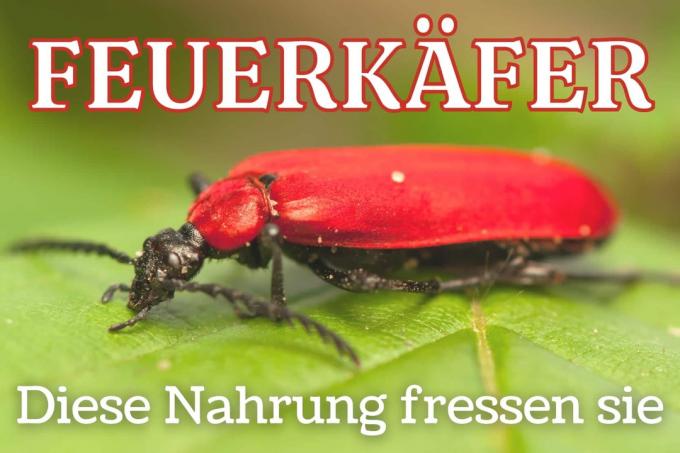
contents
- Two life stages: beetles and larvae
- Bugs eat that
- The larvae eat that
- Fire beetles are beneficial
- Identify fire beetles
- frequently asked Questions
Fire beetles (Pyrochroidae) are red like fire, which makes them easy to spot. Many a gardener gets scared and anxious as soon as he sees several. But how gluttonous are they and what do fire beetles actually eat?
In a nutshell
- Beetles live only during the summer months and rarely eat, larvae live about three years
- Favorite food of beetles: flower nectar, pollen, tree sap and honeydew from lice
- Favorite food of the larvae: mainly fungi, partly other (harmful) insects and their larvae
- Food spectrum makes them welcome beneficials in the garden
Two life stages: beetles and larvae
When it comes to the food preferences of the fire beetle, we can't just focus on the adult beetle. Even if this mainly catches the eye, there is no way around the larva when it reproduces. This lives "invisibly" under a tree bark and of course also has to absorb nutrients in order to grow.
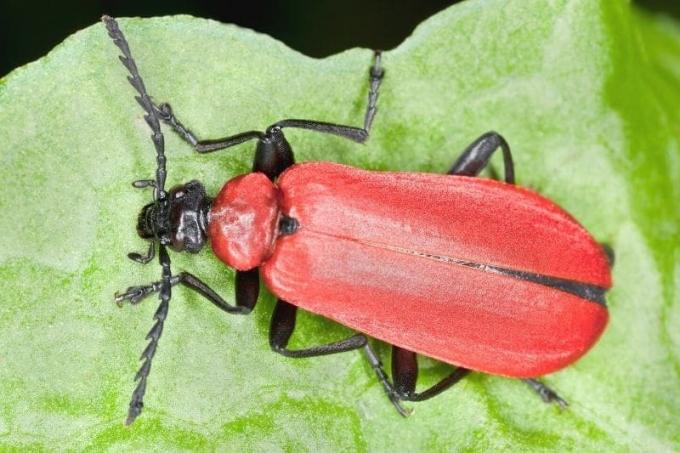
A notice: With its red elytra, this beetle resembles a cardinal wearing his red robe. It is therefore often referred to as the cardinal beetle.
Bugs eat that
Imagines, as sexually mature insects are called, rarely eat. But then it must be sweet food. Among other things, fire beetles eat:
- Flower nectar of various types of flowers
- pollen
- tree saps
- honeydew from lice
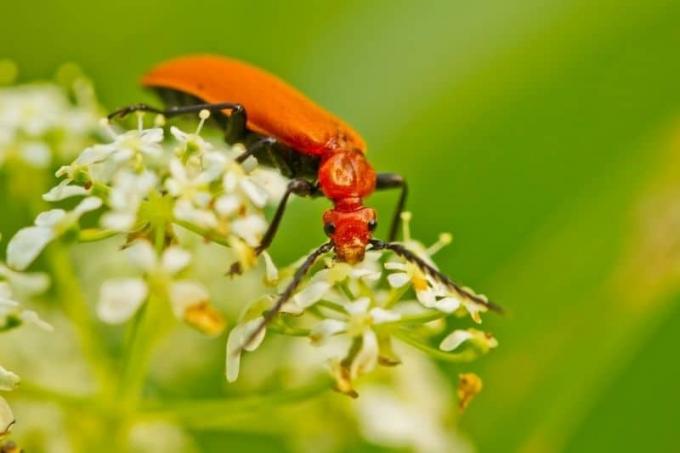
A notice: The beetles do not prick trees, the tree sap is sucked out of wounds that are already open. Therefore, even larger numbers of beetles do not pose a threat to the garden trees.
The larvae eat that
After hatching, larvae have about three years of life ahead of them tree bark spend dead trees. They either use third-party corridors or create them themselves. The feeding behavior of many species is considered predatory, but that need not worry us. On the contrary: the larvae of fire beetles like to eat various pests. Depending on the species, the menu can look like this:
- other insects and their larvae
- among other larvae of bark beetle (pest)
- various mushrooms
- in case of food shortage: younger generation of own species (cannibalism)
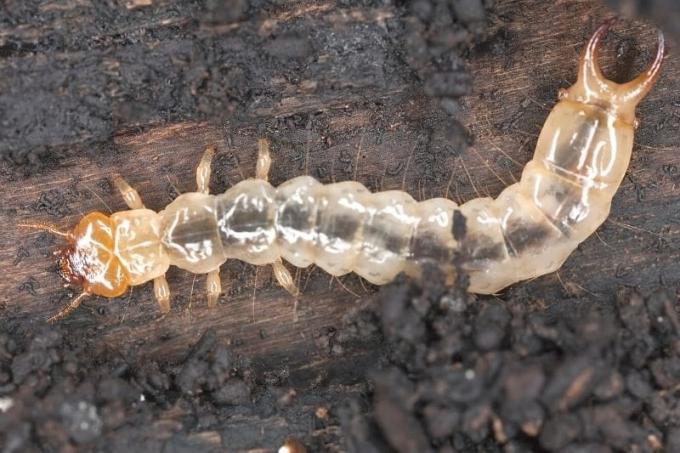
Fire beetles are beneficial
Their diet makes it clear that this species of beetle is not a pest. The fact that it eats bark beetle larvae and various fungal pathogens even makes it a beneficial insect that can also settle in the garden.
Tip: If you want to lure this beetle into the garden, leave some deadwood as an ideal place for its eggs. Also lay a species-rich flower bed to attract the insects with sweet food.
Identify fire beetles
All information about the preferred food will only help you if the sighting is actually fire beetles. The three species native to Central Europe, scarlet (Pyrochroa coccinea), Red-headed (Pyrochroa serraticornis) and Orange fire-beetle (Schizotus pectinicornis), too recognize:
Beetle
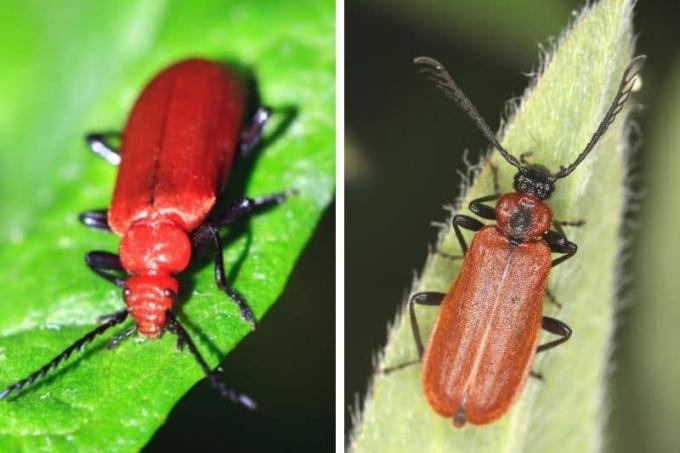
- colored red to brick red
- 3 to 20 mm long
- flattened, elongated body
- long feelers
- finely hairy upper side (not visible to the naked eye)
- large, flat head; narrow collar
- clearly recognizable temples
larva
- elongated, flattened body
- over 3 cm long
- tinted yellow-brown
- reminiscent of mealworm
frequently asked Questions
Fire bugs are often mistaken for fire beetles. However, they are two different species that are distantly related. They are easy to tell apart because fire bugs have black and red patterned elytra. Another risk of confusion is with red-colored lily beetle. However, this one is a bit smaller and has a rounder body shape. Both insect species have different food preferences than the real cardinal beetle.
Here in Central Europe, this species of beetle mainly flies around in the summer months of June and July. Preferred when there is no wind and high humidity as well as temperatures above 20 °C. Their main habitats are deciduous forests and forest edges. The insects are usually found near dead wood and on flowers.
Better not. This type of beetle has a decoy pheromone called cantharidin, which is considered a strong irritant and nerve toxin. It can severely irritate human skin and mucous membranes.
